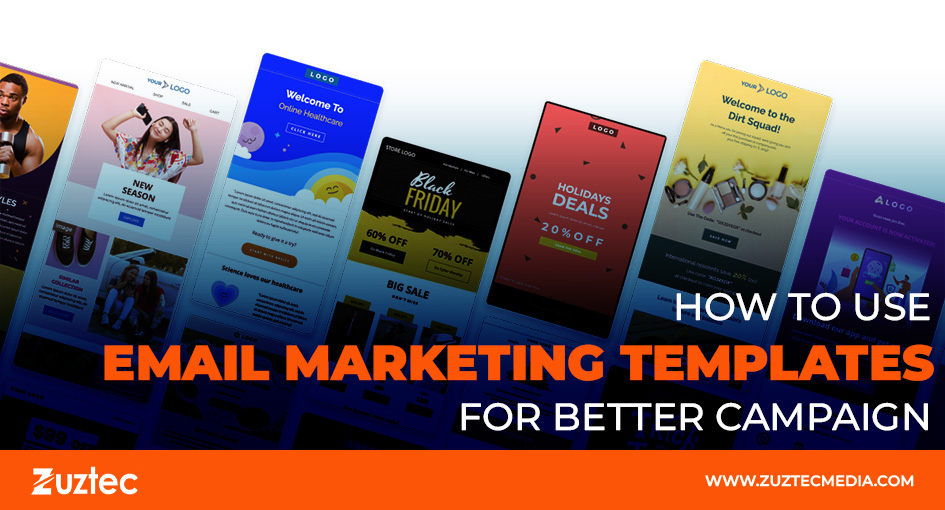
How to Use Email Marketing Templates for Better Campaigns
Email is still one of the most effective digital marketing tools. It offers direct access to your audience’s inbox, helps build relationships, and drives consistent conversions. But creating a new email from scratch every time can be time-consuming and prone to errors. That’s why many marketers turn to email marketing templates to save time and maintain consistency across campaigns.
These are pre-designed layouts that allow you to quickly craft emails without needing to start from zero. These templates are especially useful for recurring email types like newsletters, promotions, product announcements, and welcome sequences. By using templates, marketers can focus more on content and less on formatting while also ensuring brand consistency and optimal design across devices.
Templates also make A/B testing easier since you can quickly tweak subject lines, copy, or visuals without rebuilding the entire email. Whether you’re a small business owner managing your campaigns or part of a larger marketing team, templates can streamline your workflow and improve your results.
In this article, we’ll explore how templates work, the types available, their key benefits, and best practices for using them. You’ll also see real-world examples and learn where to find high-quality templates you can customize for your campaigns.
Let’s dive into how you can make your email marketing more efficient and effective with the right templates.
What Are Email Marketing Templates?
Pre-made email layouts known as templates are intended to assist marketers in producing polished emails rapidly. These templates come with standard elements like headers, body text areas, images, buttons, and footers.
Templates can be basic HTML or drag-and-drop style, depending on the platform you’re using, such as Mailchimp, HubSpot, Constant Contact, or ConvertKit. Most are customizable, so you can add your brand colors, logo, fonts, and specific content.
Using templates helps maintain a cohesive look across your campaigns, which improves brand recognition and builds trust with your audience.
Benefits of Using Templates
Templates are more than just time-savers—they also enhance the overall effectiveness of your campaigns. Here are some key benefits:
- Consistency: Keep all your emails on-brand with the same fonts, colors, and layout styles.
- Efficiency: Save time by reusing a structure instead of starting from scratch.
- Professional Design: Many templates are built with mobile responsiveness and best practices in mind.
- Improved Accuracy: Reduce formatting or design errors.
- Faster Testing: Easily create versions of your emails for A/B testing.
- Scalability: Manage campaigns more easily as your audience grows.
Templates are especially valuable when you have to send multiple emails per week or run multiple campaigns at once.
Types of Email Marketing Templates
There are different types of templates depending on the goals of your campaign. Some of the most common include
- Newsletter Templates: Used for regular updates, industry news, or blog roundups.
- Promotional Templates: Highlight sales, discounts, or limited-time offers.
- Welcome Email Templates: Automatically sent to new subscribers to introduce your brand.
- Product Launch Templates: Showcase a new product or service with clear images and CTAs.
- Transactional Templates: Order confirmations, shipping updates, and receipts.
- Re-Engagement Templates: Win back inactive subscribers with personalized content or incentives.
Choosing the right template type depends on your specific marketing goal and the nature of your audience.
Best Practices for Using Templates
To get the most from your templates, follow these key best practices:
- Customize Every Time: Use the template as a base, but tailor your message to your audience and campaign.
- Use Clear Subject Lines: Pair your template with compelling subject lines that encourage opens.
- Include a Strong CTA: Every email should have a single, clear call to action.
- Optimize for Mobile: Ensure your template is responsive and easy to read on smartphones.
- Keep It Simple: Avoid clutter—use clean layouts with clear headings and short paragraphs.
- Test Before Sending: Send test emails to yourself or your team to check the layout and links.
A well-used template should feel customized to the reader, not like a generic or automated message.
Lastly, email marketing templates are a practical solution for creating high-quality, consistent campaigns quickly and efficiently. They help marketers save time, reduce errors, and maintain a strong brand image, while also improving the overall user experience.
Whether you use ready-made templates or create your own, the key is to customize them to meet your audience’s needs. It should never seem as though templates are a one-size-fits-all solution. When utilized effectively, they free you up to concentrate on what counts: creating the ideal message and establishing enduring bonds with your subscribers.
As email continues to evolve, templates will remain a core part of successful marketing strategies. Start using them today to streamline your workflow and elevate your campaign performance.

